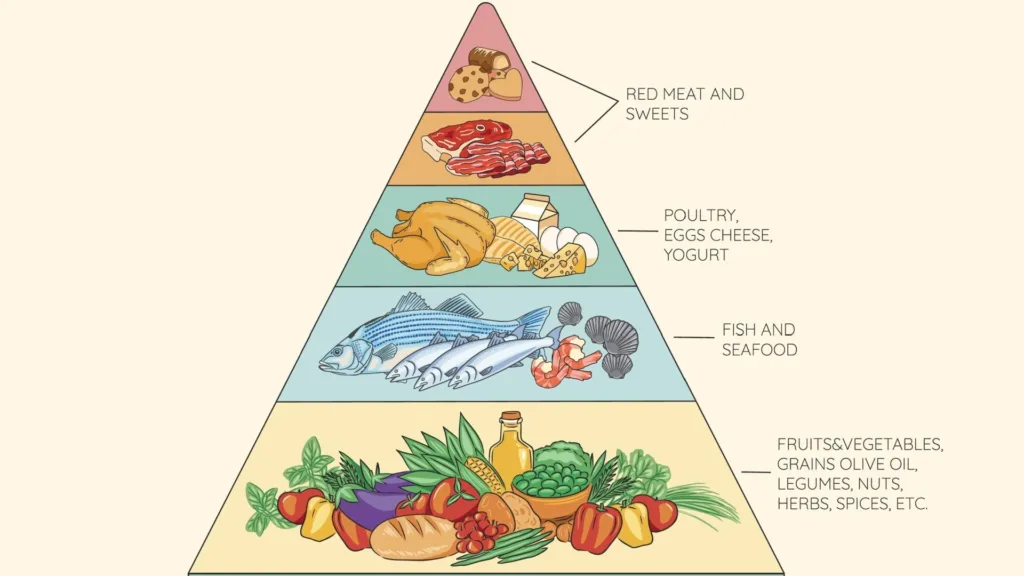Categories
Hot Insights
See All-

How to Get Over Burnout – Signs and Natural Ways to Heal
What is burnout syndrome: Signs of mental burnout More than a buzzword, burnout represents a real health concern affecting countless people worldwide. The World Health Organization considers burnout syndrome or severe burnout a legitimate medical diagnosis. It is your body’s distress signal, a sign that you’ve reached your breaking point. Burnout isn’t about having a […]
-

The Best Drinks for Diabetes and Worst to Avoid
Worst and best drinks for diabetes Keeping yourself hydrated is a must, whether you have diabetes or not. Insufficient water intake can lead to elevated cortisol levels, negatively affecting blood glucose regulation (1). Unfortunately, many store-bought beverages are laden with harmful ingredients. So, how can those with diabetes discern between beneficial and detrimental choices? How […]
-

Why Are People Addicted to Their Phones: 10 Ways To Stop It
Why are people addicted to their phones: Unveil the reasons Addiction is, according to Merriam-Webster, “a psychological need for a habit-forming behavior having harmful physical, psychological effects.” In the same logic, phone addiction is an obsessive inclination for the smartphone, which may negatively impact physical and mental health. According to a 2011 survey conducted by […]
-

Does Milk Help Heartburn | Milk and GERD
Milk and acid reflux: A myth or real connection? In movies, when a character takes a spicy bite and reacts with mouth-fanning, they usually rush to grab milk. Due to its calcium and protein, milk is thought to cool the spice and relieve heartburn. But is there a real connection between milk and reducing acid […]
-

Is Eczema an Autoimmune Disease? What You Should Know
Eczema and autoimmune disease: Is there a link? Eczema includes immunity-related problems such as inflammation and allergy-like conditions. But is there a link between eczema and the complexities of autoimmune diseases? Eczema: The skin dilemma Eczema is a broad term for itchy and inflamed skin conditions. It is also called dermatitis, where ‘itis’ means ‘inflammation’ […]
Video Series
See All-

How To Get Pregnant Faster: Tips To Help You Conceive
-

Tired of Diet Trends? Try the Timeless Food Pyramid
-

Breast Cancer Awareness: Knowing the Signs Could Save Your Life
-

Easiest Way To Lose Weight: 12 Simple Tricks Unveiled
-

6 Best Fermented Foods and Their Benefits
-

Gaslighting Signs: Trust Your Instincts, Safeguard Yourself
-

Intermittent Fasting: Lose Weight Without Counting Calories
-

Creamy Swaps: Healthy and Delicious Substitutes for Heavy Cream
-

Ward off Inflammation: Transform Your Health With Diet Choices
Advisory Board
Learn more-

Fetimah Khan, MD
MDDr. Fatimah Khan has a good knowledge of her field and very well medical content writing expertise. She is a competent doctor and the author of hundreds of medical articles.
-

Donna Schwontkowski, DC (retired), MS and BS Nutrition, Herbology
Clinical Nutrition, Deficiency Diseases, Heavy Metal & Environmental Toxins, Detoxification, Chiropractic Medicine, Herbal Healing Master Herbalist certification in herbs from the School of Natural Healing BS NutritionDr. Donna Schwontkowski is a retired chiropractic physician with a master’s degree in Nutrition and Herbology. She has focused her career on three primary areas: clinical nutrition, learning and memory, and health/self-improvement publications. Dr. Donna’s mission in life is to act as an intercessor for people in all three of these areas, allowing them via teaching them, working in groups with them, or mentoring them to reach their potential in health, learning and memory, and ability to transform one’s life. Dr. Donna was also a journalist for health and fitness magazines for 15 years, the editor of Sacramento, CA’s Health & Fitness Magazine, and Co-producer and host of a TV show on health for four years. She has taught hundreds of community courses on many aspects of health and natural healing to thousands of students over the years. Her accelerated learning background has also allowed her to teach thousands of college and postgraduate students science and dozens of children how to read five books in a week as well as how to learn any subject quickly, including health and science.
-

Sheridan Genrich, CGP, NP
Clinical Nutritionist, Naturopath & IridologistSheridan is a degree-qualified clinical nutritionist, naturopath & health coach who specializes in mood & digestive disorders, particularly food-related sensitivities. A certified FitGenes practitioner (nutrigenomics - interpretation of how personalised nutrition & lifestyle interventions impact genes). Also trained in Vitae Mosaic, naturopathic functional medicine. Through comprehensive anlaysis of the symptoms, timeline health history, iris assessment and functional lab results (among other tests), she can piece together the root cause of the problem, so you can gain control over your health & live with your true potential. Her local & online practice is grounded in cutting edge research on gut-brain nutritional science. Since completing a health science degree in complimentary medicine 8yrs ago, Sheridan has continued to deepen her research & use of bio-individual nutrition, herbs and the latest in functional medicine testing. This has seen significant improvements in the quality of life for her clients. Even those with long-standing chronic conditions experience rapid relief, when the biochemical imbalances or 'triggers of dysfunction' are corrected. She is a co-author on mental health of the Amazon best selling book: "Rapid Change: For Busy Heart Centered Women Who Want To Be The Best Version of Themselves"
-

Joel Warsh, MD, MSc
Pediatrician Pediatric and Adolescent Medicine, Integrative MedicineJoel Warsh is a Board-Certified Pediatrician in Los Angeles, California who specializes in Parenting, Wellness and Integrative Medicine. He grew up in Toronto, Canada and completed degrees in Kinesiology, Psychology and Epidemiology and Community Health before earning his medical degree from Thomas Jefferson Medical College. He completed his Pediatric Medicine training at Children’s Hospital of Los Angeles (CHLA) and worked in private practice in Beverly Hills before founding his current practice, Integrative Pediatrics and Medicine Studio City, in 2018. Dr. Gator has published research in peer-reviewed journals on topics including childhood injuries, obesity and physical activity. He has been featured in numerous documentaries, films, summits, podcasts and articles including CBS, Fox, LA Parent, Washington Post, MindBodyGreen, and many others. He is also the founder of the Parenting Masterclass Platform Raising Amazing which can be found at RaisingAmazingPlus.com Dr. Joel Gator may be best known for his popular Instagram DrJoelGator where he offers weekly parenting and integrative pediatric support. He is a consultant for high-profile brands in the health and wellness space. Dr. Gator is married to Sarah Intelligator, an attorney, whose Holistic Divorce and Family Law practice is located in Beverly Hills. For almost 20 years, she has taught yoga throughout Los Angeles. Dr. Joel was given the nickname, Dr. Gator, by his peers after marrying Sarah Intelligator (yes that is her real last name) and the nickname stuck. Dr. Gator is an avid athlete, foodie and traveler.
-

Tatiana Denning, D.O.
Family Medicine PhysicianDr. Denning has always believed in root-cause medicine. With a focus on wellness and prevention. she has used both her medical degree and her degree in psychology, to create a program with proven results. Dr. Denning's desire to correct the underlying causes underlying cause of many chronic medical conditions has been the driving force for her focus on nutrition and weight management. With years of experience in the field, Dr. Denning has helped thousands of patients lose thousands of pounds.
-

Jordan Stachel, MS, RDN
NutritionistJordan is most fulfilled when guiding others towards making stepwise, sustainable changes that add up to big results over time. Jordan works with a wide variety of individuals, ranging in age from children to the elderly, with an assortment of concerns and clinical conditions. She helps individuals optimize overall health and/or manage disease states using personalized medical nutrition therapy techniques. It can be difficult for individuals to navigate health conditions and to discern between nutrition information that is both credible and accurate, versus misinformation and conflicting guidance. As an expert in the field, Jordan finds great fulfillment in filling this gap by providing detailed clarification and explanation by leading the discussion surrounding nutrition and wellness. Jordan looks forward to continuing to help others achieve the healthiest version of themselves, improve longevity, and be a dependable source and voice within the field of nutrition and dietetics.
-

Preet Pal Singh Bhinder, MD
MD and FID (Fellowship in Diabetes, Royal Liverpool Academy) Diabetes SpecialistPreet Pal Singh Bhinder is a physician (M.D. Medicine) with specialization in diabetes (Fellowship in diabetes, Royal Liverpool Academy). He has a particular interest in metabolic disorders.
-

Komal Gilani, MBBS
General Medical Practitioner Pakistan Medical & Dental Council (PMDC)Dr. Komal Gilani is a licensed general medical practitioner in Pakistan with a Bachelor of Medicine & Bachelor of Surgery (MBBS) degree. Her research-oriented approach to clinical queries defines her take on health. Presently, she is actively engaged in multiple studies aiming to improve healthcare through her work.
-

Anh Cao, M.Sc., Ph.D Candidate
Ph.D Candidate in Immunology Immune Cells, Innate Immune CellsAnh Cao is a Ph.D. candidate in immunology at Harvard University. He obtained his M.Sc. Degree in immunology at University of Toronto. For the last 8 years, his research has focused on a wide range of immune cells, including B cells, T cells, and innate immune cells. His publications have been featured in high-profile journals such as Cell and Nature which have been cited over 200 times.